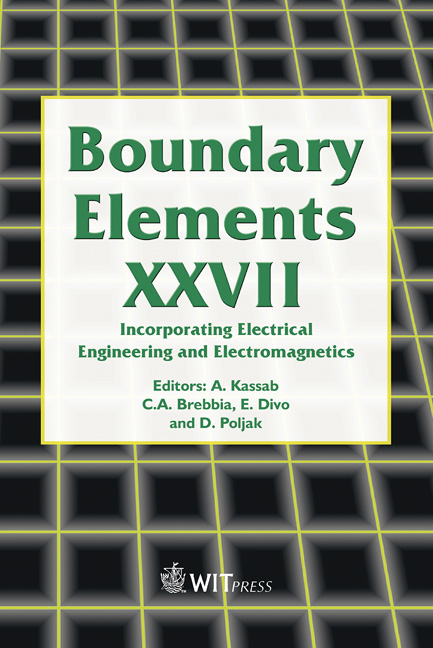3D Elastic Scattering By Empty Cracks Using The Traction Boundary Element Method
Price
Free (open access)
Transaction
Volume
39
Pages
11
Published
2005
Size
668 kb
Paper DOI
10.2495/BE050361
Copyright
WIT Press
Author(s)
P. Amado Mendes & A. Tadeu
Abstract
The 3D wave propagation in solid media containing 2D cracks is modelled in the frequency domain by developing a Traction Boundary Element Method (TBEM). The proposed formulation makes it possible to model thin bodies for which the classical Boundary Element Method (BEM) degenerates. The algorithm developed simulates wave propagation in the presence of empty cracks (even with no thickness) with arbitrary geometry and orientation. The resulting hyper-singular integrals are evaluated analytically. Once the TBEM has been implemented, the solutions are verified by solving the case of an empty circular inclusion, for which analytical solutions exist. Combining the BEM and the TBEM formulations allows the computation of displacements in the opposite sides of the crack. Time responses of the wave field scattered by an S-shaped empty crack in an unbounded medium are computed using complex frequencies in order to avoid aliasing phenomena. The main wave propagation features are illustrated by snapshots of computer animations. The effect of these complex frequencies is removed in the time domain by rescaling the responses using an exponential factor. Keywords: wave propagation, elastic scattering, empty cracks, Boundary Element Method, Traction Boundary Element Method, two-and-a-halfdimensional problem. 1 Introduction Different scientific formulations have been developed to study the elastic and acoustic wave scattering by inclusions and thin heterogeneities. Since the analytical approaches (e.g. Pao & Mow [1]) are only known for simple and
Keywords
wave propagation, elastic scattering, empty cracks, Boundary Element Method, Traction Boundary Element Method, two-and-a-halfdimensional problem





